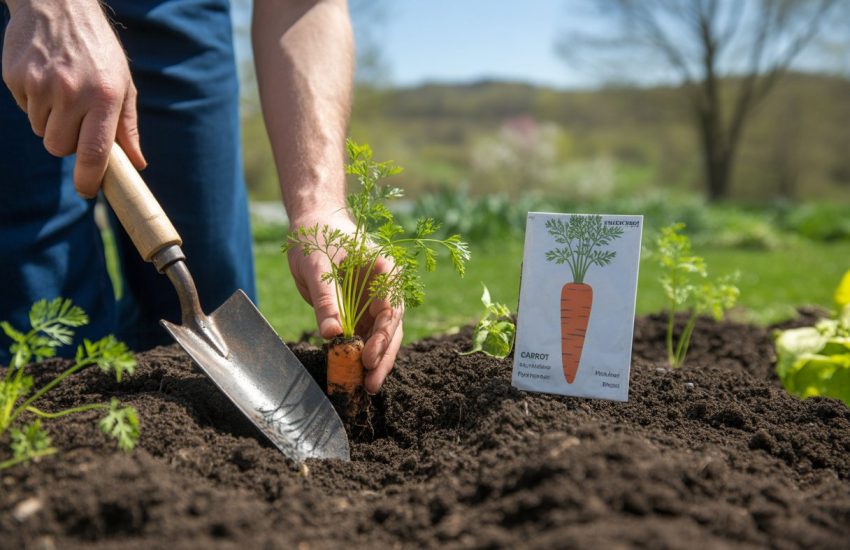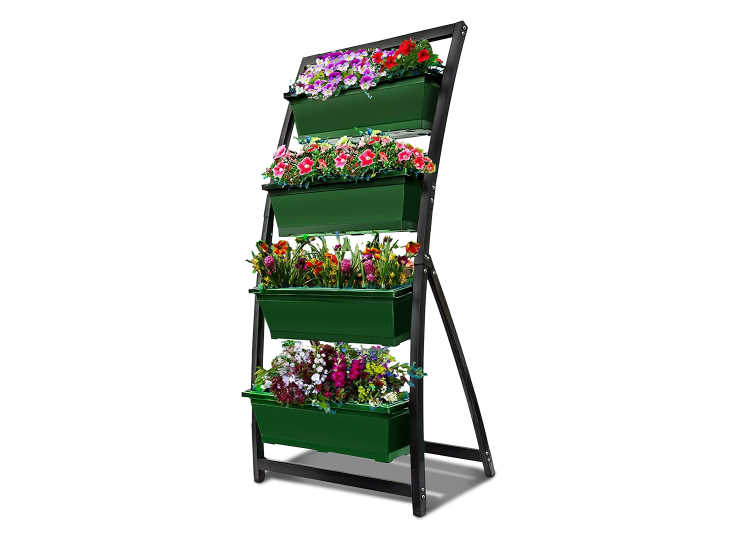5 Best Perennial Flowers To Grow In Ontario
There are many flowers to choose from for the landscape of your garden, and some of the most popular varieties are easy to grow.
Flowering perennials like Balloon Flower and Catmint are easy to grow and have excellent characteristics. Some of these plants are even drought tolerant and easy to care for.
Listed below are some of our favourite for the Ontario climate. We hope you enjoy them. If you don’t know where to start, consider starting with a perennial seed mix or two.
Choosing the right perennials for your garden is essential. There are several reasons to select these plants. They are easy to grow and produce spectacular blooms.
These plants will attract butterflies, bees, and birds and will enhance the appearance of your garden. Regardless of your budget, you’ll be delighted with your beautiful, colorful perennials! And, because these plants thrive in average soil conditions, you can’t go wrong.
Many perennials can be used in the landscape. For example, yarrow is a hardy perennial that is suitable for many areas.
Yarrow is one of the easiest perennials to care for and grows well in pots. Its fragrant flowers are showy and are ideal for the landscape. It is easy to grow and doesn’t require much maintenance. The best part about it is that it is low-maintenance.
Wild Petunia
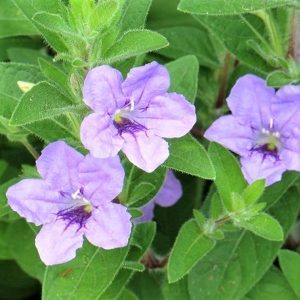
It is indeed a labor of love to have to replace annuals like petunias year after year in a garden, but they are beautiful nonetheless.
However, if you want to have those classic blossoms without the hassle of having to wait for them every year then there is a way.
There is no better perennial flower than Wild Petunia (Ruellia Humilis), which offers beautiful blooms as well as easy maintenance for years after it is planted in the ground!
As the summer progresses, this specimen becomes dotted with lavender colored flowers that are similar to the cultivated petunias that are lining the shelves at garden centers throughout the year.
Even though the two flowers are members of different families, Wild Petunia is a great way to take advantage of the beauty and preserve it for much longer than just a single growing season.
The flowers bloom among the abundance of light green leaves that have a very distinct character to them. The leaves have a thin layer of short hair covering the surface. Wild Petunias have a look of being furry because of this.
Purple Prairie Clover
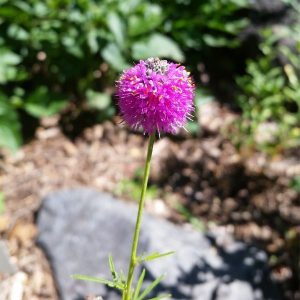
There is a stunning native legume called Purple Prairie Clover (Dalea purpurea) with sweet, stubby purple blooms that is simply charming, deep-rooted, beautiful.
The bright orange spangles sit along the petals as if they were a frilly tutu, and the light purple flowers look as if they are wearing a light purple tutu.
During June and July you can expect to see a lot of butterflies attracted to the bright colors of this selection as it blooms.
This plant is native to North America, and grows naturally into the shape of a vase, with its finely textured leaves that are ideal for an upright position in a rock garden, in front of a sunny perennial border, or as an addition to container gardens.
This is a very good companion plant for other Prairie natives and other plants that live nearby. This legume works in much the same way as all legumes do, namely to fix nitrogen and to enrich the soil around it.
What is the slope of your property? With its long, taproot-like roots that reach well below the surface of the soil, Purple Prairie Clover also prevents soil erosion.
Purple Prairie Clover has a long lifespan and can withstand hot and dry conditions. You can contact us for high quantity pricing for slopes over 500 plants if you have any questions.
Purple Dome New England Aster
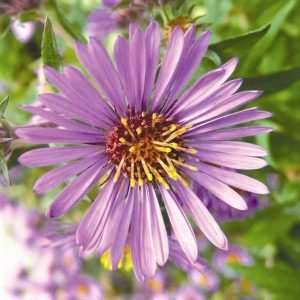
The New England Aster (also called Symphyotrichum novae-angliae or Aster novae-angliae, depending on your linguistic preference) is a native North American wildflower found along the banks of streams and in low-lying, moist meadows.
As it is a great choice in terms of a color choice for the landscape between August and September, it works well as a companion plant.
Depending on the variety of plant you choose, you can find bloom colors that range from a bright red violet to a blue violet, all on the same plant.
Despite being rough on the stem and having coarse, narrow leaves, it appears finely textured from a distance, despite its rough stem and coarse, narrow leaves.
There is nothing more dynamic than this plant, which brings a new layer to your landscape.
The area will also be absolutely covered with butterflies and pollinators from dawn until dusk. It is certainly one of the most incredible displays of nature, and is one of the most interesting to watch. There should be some comfy seating nearby.
Sombrero Lemon Yellow Coneflower
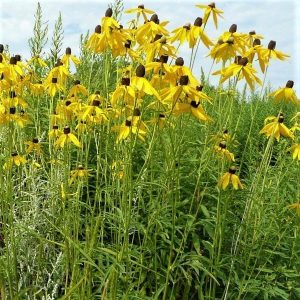
Plants with instantly recognizable forms are among those standouts, and Yellow Coneflower (Ratibida pinnata) is one of them.
These native plants have an amazing contrast between their orange-yellow petals and their delightfully droopy form.
In a sunny and well-drained wildflower garden, it would be a wonderful addition.
Easily maintained and highly adaptable, it thrives in well-drained soils. It is a water-wise plant that blooms from July to September once established. If you have a backyard, add a splash of color with this plant.
Coneflowers are often referred to as Gray Head, Gray Headed Coneflower, Pinnate Coneflower, and Prairie Coneflower.
Despite its many merits, it cannot be denied that it has many benefits.
Sweet Black-Eyed Susan
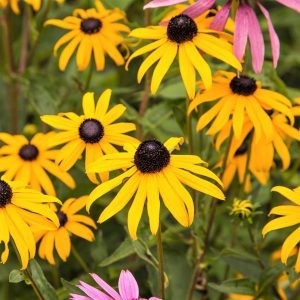
Bright and colorful, the Sweet Black-Eyed Susan (Rudbeckia subtomentosa) is a sure way to put a smile on your face.
During the rainy season, this native wildflower bursts with a vibrant yellow color that brightens up any dull garden.
Flowers of this robust beauty do well in well-drained soil and can be grown alongside other varieties.
When mixed with other colors in a butterfly garden, it creates a stunning sight along a pathway.
This thin-petaled, yellow bloom will brighten your garden in the summer and fall.
The Sweet Black-Eyed Susan is a low-maintenance plant that is perfect for novice gardeners.
These buttery yellow flowers are a favorite of bees and butterflies. With their ability to see UV light, bees seem to find the elegant yellow of the Sweet Black-Eyed Susan a perfect perch. Keeping the ecosystem surrounding your garden thriving with pollinated plants is made easy with this flower!
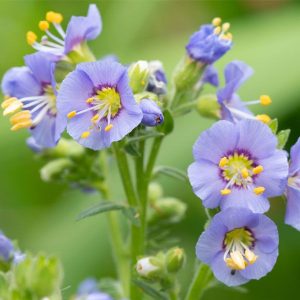
In every garden, there are certain places that don’t seem to be able to grow flowers of any kind.
If it is too shady or it is soggy all the time, then you might think you will have to put up with an eyesore.
The good news is that Jacob’s ladder (Polemonium reptans) is looking for exactly those conditions so there’s no need to despair.
The Jacob’s Ladder, with its whimsical appearance that seems to be right at home in a fairy tale woodland, is just the right amount of whimsical and practical for any garden.
There is a reason why Jacob’s Ladder is named after the symmetry of its deep green leaves.
There are some who say that they resemble the ladder to heaven in Jacob’s dream in the Bible.
As the leaves sprout densely from stems, the foliage creates an appearance of a mounded appearance. Jacob’s Ladder’s narrow leaves make an almost fern-like appearance due to the density of them.

